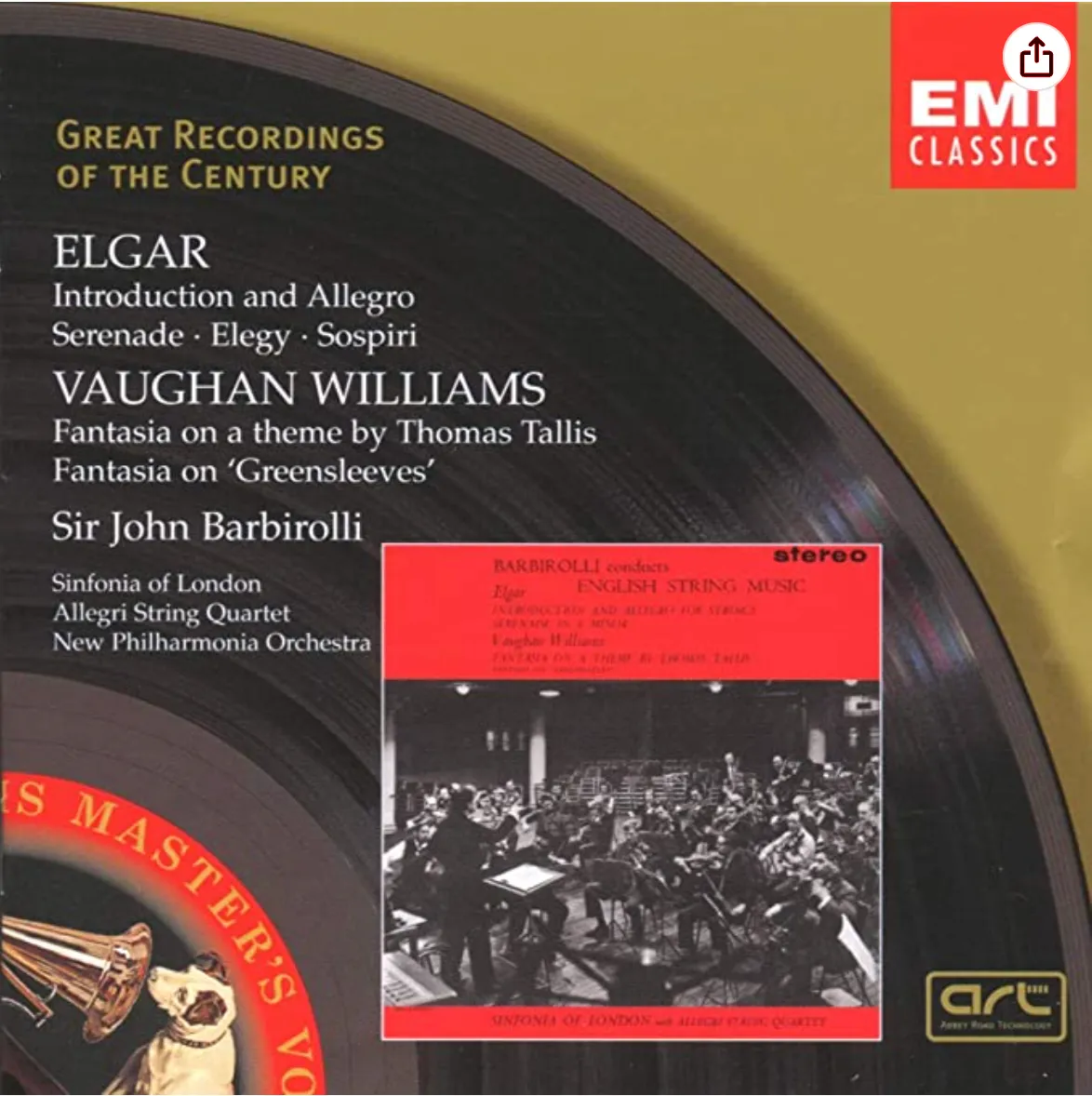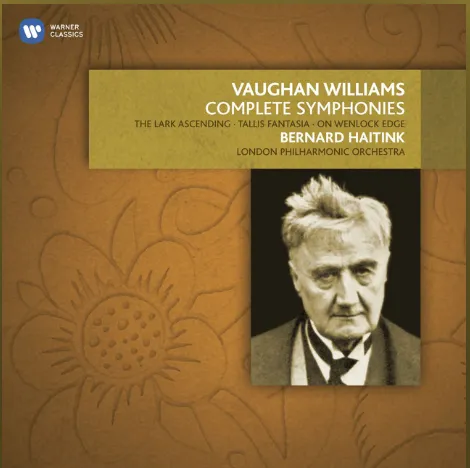With its haunting theme and unusual string quartet / string orchestra configuration, Vaughan Williams's Fantasia on a Theme by Thomas Tallis is one of the best-loved pieces by one of our best-loved composers. But what is the key to its magic, and what are the best recordings of the Tallis Fantasia?
As well as being one of the most famous English composers of all time, we also named Vaughan Williams as one of the best composers ever
What is Vaughan Williams’s Fantasia on a Theme by Thomas Tallis?
Vaughan Williams’s Fantasia on a Theme by Thomas Tallis is a 15-minute (or so) work for double string orchestra and string quartet, based on a melody by the 16th-century composer Thomas Tallis.
The quartet traditionally sits away from the orchestra in performance, to create an atmospheric antiphonal (alternating voices) effect. It is often known simply as the ‘Tallis Fantasia’.
And who was Thomas Tallis?
Born in around 1510, Tallis was one of the most influential composers of the Tudor era, whose career ran through the reigns of four monarchs: Henry VIII, Edward VI, Mary I and Elizabeth I. Although he was staunchly Catholic, he managed to steer a safe path through the violent religious upheavals of the time. In fact, in the 1570s, he and his fellow Catholic William Byrd were even given an exclusive licence by the Protestant Elizabeth I to publish music. His best known works include Spem in Alium, written for 40 separate voices.
Which theme by Tallis did Vaughan Williams base his Fantasia on?
The tune is from a setting of Psalm 2 that Tallis wrote in 1567. It originally sets the words ‘Why fumeth in sight: The Gentils spite, In fury raging stout? Why taketh in hond: the people fond, Vayne things to bring about?’
When was the Tallis Fantasia first performed?
On 6 September 1910 at the Three Choirs Festival in Gloucester Cathedral (one of the UK's best classical music festivals). Vaughan Williams himself conducted the London Symphony Orchestra (one of the best orchestras in the world) in the first performance, which was followed in the same concert by Elgar conducting his own The Dream of Gerontius.
Did it go down well?
Very well. Vaughan Williams, in his late 30s, was already establishing himself as a major name, but the Tallis Fantasia raised his profile even higher, not least because the concept of harking back to the 16th century was a comparatively new one. Two young composers, Herbert Howells and Ivor Gurney, were at the premiere performance and were so excited by it that they spent the night walking round Gloucester discussing it.
What are the best recordings of Vaughan Williams's Fantasia on a Theme of Thomas Tallis?
Sir John Barbirolli / Sinfonia of London
EMI 567 2402
Applying the idea of the Elizabethan (instrumental) fantasia to a Tudor (vocal) hymn tune, the Tallis Fantasia’s 15-minute, single-movement design unfolds in a way that’s different from the classical concept of developmental interplay.
Instead, everything grows from one idea: the theme itself, which is varied, fragmented, or extended with a particular kind of freedom that bypasses classical tradition. And it sweeps in broad musical paragraphs suggesting the proportions and great spaces of cathedral architecture.

While the music’s sureness of purpose makes a dud performance almost impossible, doing justice both to its supple phrasing and spacious grandeur isn’t easy. Barbirolli’s extraordinary recording, made in London’s Temple Church in 1962, squares this circle like no other.
For anyone conducting this music, being a string-player has to be a trump card. Sure enough, Barbirolli the cellist secures orchestral playing of rapturous beauty (the string quartet’s violin and viola solos are each exceptional).
He also generates a level of power and intensity that’s absolutely fearless; yet there’s finesse here too, with the ebb and flow of the great tune’s phrases beautifully conveyed. Some will find the surge towards the central climax over-impulsive, and the general mood too rhapsodic. But there is no other recording that conveys the music’s wondrousness quite like this. And for its age, the remastered recorded sound is impressively good.
Sir Adrian Boult / New Philharmonia Orchestra
BBC Legends BBCL 4256-2
Boult’s EMI studio recording is currently available only within a boxed set of Vaughan Williams’s symphonies. But he also made several others, including this one, recorded at the Cheltenham Festival in the composer’s centenary year of 1972.
While the orchestral sound – full, sonorous, and superbly focused – is similar to that conjured by Barbirolli the Romantic, in other respects Boult the Classicist is at an opposite pole. The pace here is tight-reined and insistently un-lingering, with a directness that memorably brings out the work’s powerful sense of purpose, if at some expense to its visionary side.
And – as can’t be helped in a concert hall – the second string orchestra doesn’t sound quite as distant as it should. But if you want the ideal antidote to Barbirolli’s rhapsodising, Boult’s dry-eyed intensity provides it.
Bernard Haitink / London Philharmonic Orchestra
EMI 585 1512 £6.99
This is a fine example what can happen when this music is approached from a non-English standpoint, and by a master-conductor at that.
Handsome LPO string-playing and spacious, not over-cavernous recorded sound are major assets. So is Bernard Haitink’s way with the music, which has a kind of rapt, seraphic grandeur that this longstanding Bruckner-conductor knows exactly how to conjure.
- Conductor Bernard Haitink dies aged 92
- What it was like to play under Bernard Haitink: the London Philharmonic Orchestra musicians remember the great maestro

In the passage after the theme’s two opening statements, where the main and distant string orchestras alternate like antiphonal choirs, there’s a spellbinding stillness here that no other recording quite has. The other performances on the disc excel also, with soaringly beautiful violin-playing from the teenage Sarah Chang in The Lark Ascending.
Sir Andrew Davis / BBC Symphony Orchestra
Warner Apex 0927 495842
Davis takes his cue from Boult in his refusal to risk inflating the music: the pace is swift(ish), the phrasing unexaggerated, and the approach almost self-effacingly presentational, letting the work itself do the talking. The theme’s opening statement at first seems too matter-of-fact: surely more has to happen than this?
And it does: from then on there’s a wonderful sense of unbroken flow, as the music’s power and loveliness seem to grow from this opening source like a process of nature. The same focus on unforced expression transfers to the orchestra, which sounds rather like a huge multiple viol consort, vividly connecting the Fantasia with the musical world where Tallis’s tune came from. The musical outcome isn’t just contentiously interesting for the sake of being different: it really is interesting.
And one to avoid
No one in James Judd’s recording with the New Zealand Symphony Orchestra is doing anything far wrong – but Judd’s four-square phrasing of the main tune misses its sense of chant-like suppleness, and from then on the performance never quite takes wing. The theme’s beautiful reprise, too, is miscued, with the solo viola’s exquisite duet with the solo violin unconvincingly recessed (it’s counterpoint, not merely accompaniment).
Read our reviews of the latest Vaughan Williams recordings
Find out more about Vaughan Willliams and his works
Here are the best music streaming services on offer